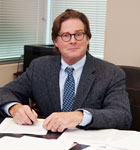At a Glance
Location
Dallas, TX
Founded
1933
Employees
2,400
Specialty
Commercial construction
Annual Sales
$2.8 billion
What differentiates Balfour Beatty Construction from its competitors?
David Hodnett: We remain client- and project-focused. We have a MAP [Mission Alignment Process], which involves a series of meetings with all the project stakeholders at the beginning of each project to determine the owners’ top goals and concerns. From that, an action plan for the project is developed, and when it’s finished, we follow up with surveys to see how we did or how we can improve. The goal of this business is to have good repeat clients. We’ve been working with some of our clients for decades. We also have company-wide initiatives that set us apart.
What are some of those initiatives?
DH: The whole industry has grown up under OSHA regulations, and we’re trying to take it a step further by embracing a culture of safety. With our Zero Harm Initiative, we’re aiming to achieve zero deaths, zero injuries to the public, and zero ruined lives by 2012. It’s more than just following the regulations—it’s about changing behaviors, changing how we think about risks, and making safety personal. By changing how we do things, we’re planning and engineering out safety risks.

What else is on the agenda?
DH: We’re always looking to the future and have a lot of aggressive goals. We’ve laid out a road map to achieve 100 percent sustainability by 2020, which includes [initiatives in] numerous areas such as reducing our water usage and the waste we generate from our operations. As an example, one of our visions is to ultimately generate zero waste to landfill from our projects. We also have a vision of reducing our use of potable water by 10 percent, relative to where we are today.
Balfour Beatty Construction ran an international BIM conference in 2008. How is BIM used by the company?
DH: We use it on virtually all our projects, especially the larger ones, whether it’s an owner requirement or not. It’s an important tool in our move towards integrated project delivery. BIM allows you to avoid problems in the field and resolve them first on the design table. We’ve even used BIM to model what an excavation would look like for safety purposes.
Can you speak to this integrated project delivery?
DH: The integrated-project-delivery concept involves breaking down the traditional silos where people are only focused on their own area of responsibility. With the move to more design-build projects, we found that the traditional approach is not the best way to have a successful job. Integrated project delivery is collaborative and requires getting all the disciplines that are involved in the project working together for the good of the project.

Has Balfour Beatty Construction won any recent awards?
DH: For the past two years running, we’ve been listed by Fortune Magazine as one of the best 100 companies to work for, and [we] were named by Engineering-News Record and Building Design & Construction as Top 10 Green Contractors. We also have a culture of community involvement. We’ve donated our services to the construction of a new Ronald MacDonald House in Washington, DC, and volunteer to serve food with an organization called So Others [Might] Eat. This division also adopted, as a community partner, Shelter House, a charity that offers temporary housing and support services for families in need. We’ve also adopted a stretch of the Fairfax County Parkway as part of Virginia’s Adopt-a-Highway Program. Other divisions have volunteered services for Habitat for Humanity and Hearts and Hammers.
Historically, Balfour Beatty has grown by geographic expansion and by acquisitions. Is the company still expanding in the current economic climate?
DH: Balfour Beatty has always been an acquiring company, no question about that. It has been a big part of our growth here in the United States. This past June, we completed acquisition of Howard S. Wright, a commercial-construction contractor headquartered in Portland, Oregon, that has been in business for over 125 years. ABQ


